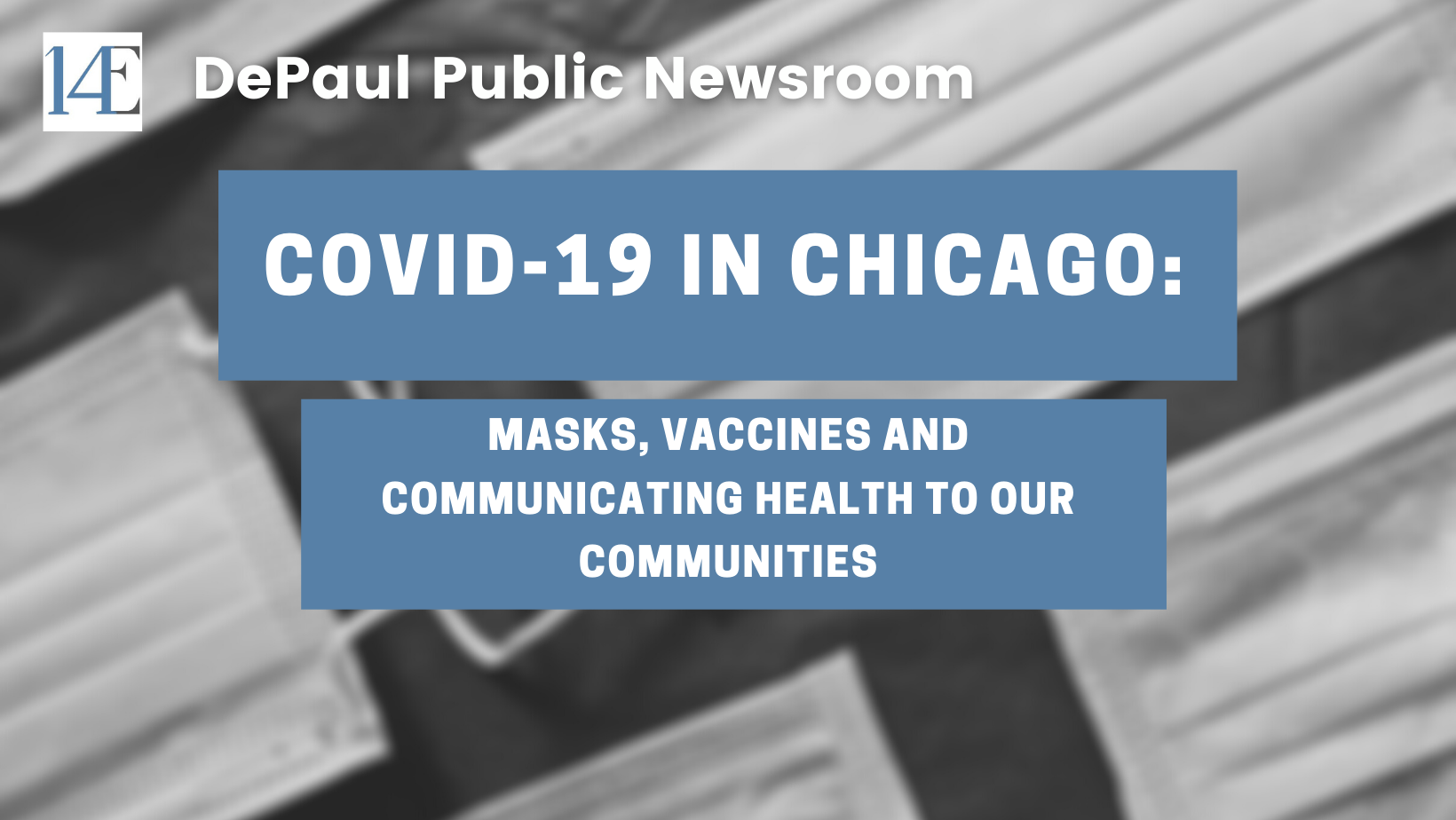Missed the public newsroom? Watch the recording here on 14 East’s YouTube.
On Tuesday, 14 East was joined by Martha Bayne and Charmaine Runes of South Side Weekly to discuss the last year of reporting on COVID-19 in Chicago and the immense task of providing information and resources for our communities.
Here are five things we learned from our time with two remarkable community-based journalists.
When it comes to divestment and inequality in Chicago, it’s all the same map.
While South Side Weekly is primarily aimed at reporting on and providing resources for residents on Chicago’s South Side, Bayne and Runes have found that a lot of these resources have also been useful to West Side residents as well. Why? Because when it comes to mapping divestment and inequality in Chicago, it is the same map which demonstrates that both residents of the South and West sides are repeatedly victims of the city’s negligence and harm.
Everybody wants to do data visualization, but what’s next?
South Side Weekly has received a plethora of responses since launching it “Live COVID-19 Tracker.” The bot, which keeps an updated on COVID-19 cases and deaths within Chicago, as of late also includes a map of which residents were receiving the vaccine. The contrast is a stark one.
As of March 4, 2021, Chicago is reporting 186,875 people fully vaccinated: 6.8% of the population.
Who is dying: Who is vaccinated: pic.twitter.com/cDvTXbFZnl
— ChiVaxBot (@ChiVaxBot) March 5, 2021
This bot clearly shows that those struggling the most with COVID-19, are not the ones receiving the vaccine. What Runes and her colleague Bea Malsky did was demonstrate a glaring inequity but the next step is forming stories out of data visualization.
Everything can’t be online, we have to get creative with our engagement.
From online reporting to bots to social media, the world’s online presence continues to grow. However, there’s still much of the world — and Chicago — that doesn’t have an online presence and we need to be creating engagement efforts that cater to the population that is not online.
South Side Weekly has continued these efforts, printing every issue and partnering with community organizations to get the issue out and ensure residents of the South Side have access to it.
It’s natural to go into crisis mode, but we need to take time to step back and reflect.
When COVID-19 first took hold of Chicago a year ago, a lot of people, especially reporters, went into crisis mode. There was a rush to gather resources and dissect information for our communities. However, we all have our breaking points and for the sake of ourselves and the readers who depend on us, we need to take a moment to step away from crisis mode and process what is happening. As we begin to do this, we’ll be able to report not just on the immediate COVID-19 circumstances but the long-term ones as well.
Sometimes, we need to write stories that are not about COVID.
At this point, a year into a global pandemic, everything is arguably about COVID-19. That being said, we need to make an effort to write about other things. To tell stories that bring us and our communities joy. We don’t know how long this pandemic will have a hold on this city, country or world but we do know that there are beautiful stories amid this pain, and it’s good to write about them.
Header image by Hannah Coyle




NO COMMENT